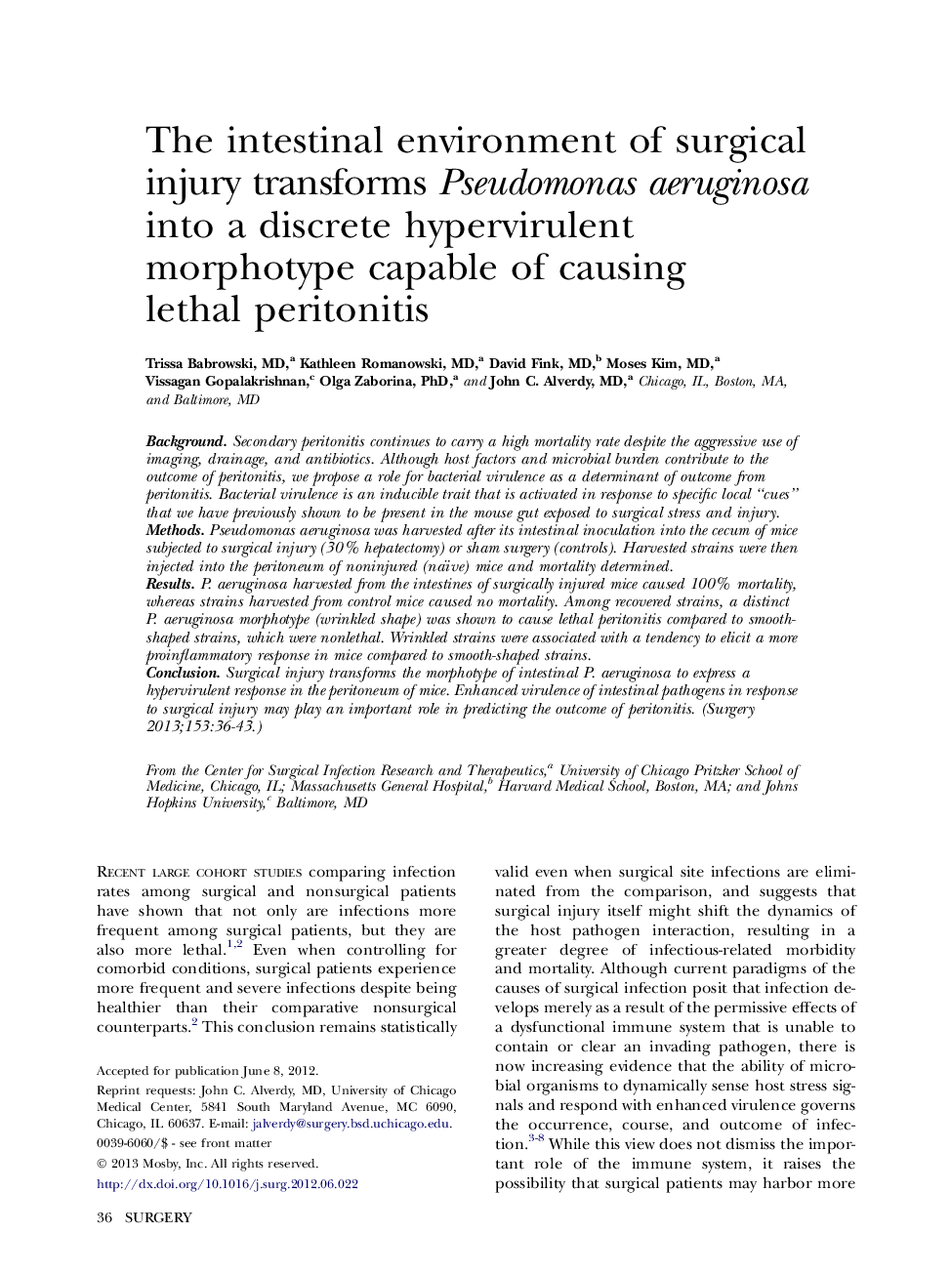| Article ID | Journal | Published Year | Pages | File Type |
|---|---|---|---|---|
| 4307686 | Surgery | 2013 | 8 Pages |
BackgroundSecondary peritonitis continues to carry a high mortality rate despite the aggressive use of imaging, drainage, and antibiotics. Although host factors and microbial burden contribute to the outcome of peritonitis, we propose a role for bacterial virulence as a determinant of outcome from peritonitis. Bacterial virulence is an inducible trait that is activated in response to specific local “cues” that we have previously shown to be present in the mouse gut exposed to surgical stress and injury.MethodsPseudomonas aeruginosa was harvested after its intestinal inoculation into the cecum of mice subjected to surgical injury (30% hepatectomy) or sham surgery (controls). Harvested strains were then injected into the peritoneum of noninjured (naïve) mice and mortality determined.ResultsP. aeruginosa harvested from the intestines of surgically injured mice caused 100% mortality, whereas strains harvested from control mice caused no mortality. Among recovered strains, a distinct P. aeruginosa morphotype (wrinkled shape) was shown to cause lethal peritonitis compared to smooth-shaped strains, which were nonlethal. Wrinkled strains were associated with a tendency to elicit a more proinflammatory response in mice compared to smooth-shaped strains.ConclusionSurgical injury transforms the morphotype of intestinal P. aeruginosa to express a hypervirulent response in the peritoneum of mice. Enhanced virulence of intestinal pathogens in response to surgical injury may play an important role in predicting the outcome of peritonitis.
